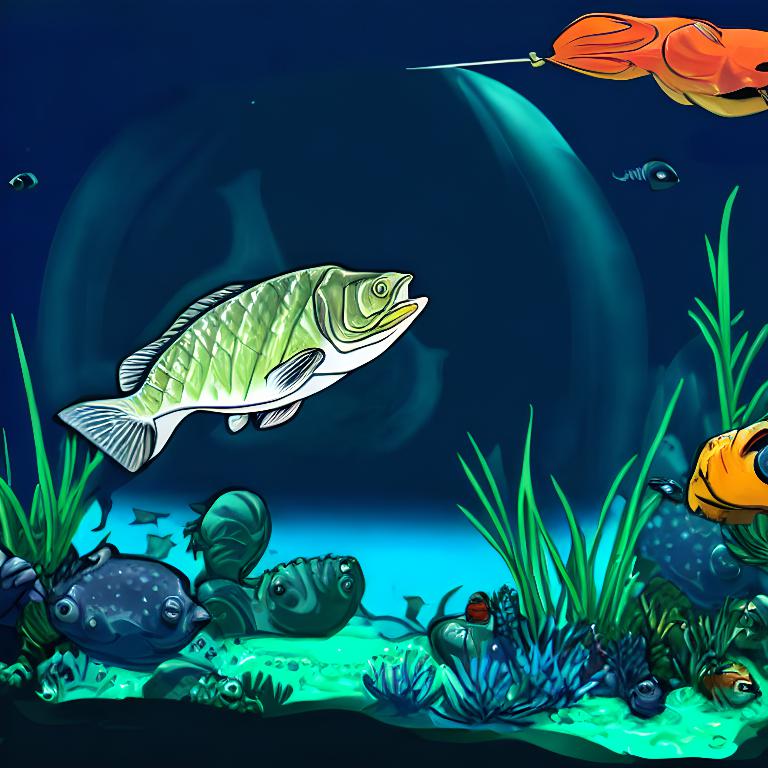Introduction
Creating the ideal habitat for your bass is essential to ensure their health, happiness, and longevity. Whether you’re an experienced fish enthusiast or a beginner, setting up a bass tank requires careful planning and attention to detail. In this guide, we’ll walk you through the essential steps and tips for creating the perfect bass habitat that mimics their natural environment, ensuring a thriving aquatic ecosystem right in your home.

1. Choosing the Right Tank
Selecting the appropriate tank size is the first crucial step in setting up a successful bass habitat. Bass, being relatively large and active fish, require ample space to swim and explore. A tank size of at least 75 to 100 gallons is recommended for a small group of bass. If you plan to house multiple bass, consider increasing the tank size accordingly to prevent overcrowding.
2. Water Quality and Filtration
Maintaining high water quality is non-negotiable for the health of your bass. Invest in a robust filtration system capable of handling the biological load that bass produce. A combination of mechanical, biological, and chemical filtration will help keep the water clean and clear. Regular water testing and partial water changes are essential to keep ammonia, nitrite, and nitrate levels in check.
3. Substrate and Decorations
Choose a natural-looking substrate for the tank bottom. Smooth gravel or sand mimics the bass’s native environment and makes cleaning easier. Adding hiding spots with decorations like driftwood, rocks, and artificial plants not only enhances the aesthetic appeal of the tank but also provides shelter for your bass, reducing stress.
4. Temperature and Lighting
Bass are cold-blooded creatures, meaning they rely on the surrounding environment to regulate their body temperature. Maintain a stable water temperature between 65°F to 75°F (18°C to 24°C) to ensure their comfort. Adequate lighting is also essential to replicate their natural day-night cycle. Use aquarium LED lights with adjustable settings to simulate sunrise, daylight, and sunset.
5. Oxygenation and Water Flow
Proper oxygenation and water circulation are vital for the well-being of your bass. Use an aquarium air pump and air stones to increase oxygen levels in the water. Additionally, ensure adequate water flow by strategically placing the filtration outlets and using a gentle water pump to mimic the current of a natural environment.
6. Aquascaping and Tank Layout
When arranging your tank, think about creating a naturalistic environment. Place larger decorations and hiding spots towards the back of the tank and leave open swimming areas in the front. This layout not only enhances the aesthetics of the tank but also provides security for your bass.
7. Diet and Feeding Routine
A balanced diet is essential for the health of your bass. Offer a variety of high-quality pellets, live or frozen foods like fish, shrimp, and insects. Remember to feed them in small amounts multiple times a day, replicating their natural feeding behavior. Overfeeding can lead to water quality issues, so monitor their consumption closely.
8. Social Dynamics
Understanding the social dynamics of bass is crucial, especially if you’re planning to keep multiple individuals. Bass can exhibit territorial behavior, so provide ample hiding spots and territories to prevent aggression. Avoid housing significantly smaller fish that could be seen as prey.
Conclusion
Setting up the perfect bass habitat requires careful consideration of various factors to ensure the well-being of these captivating fish. By replicating their natural environment and providing proper care, you’ll be rewarded with a thriving aquatic ecosystem right in your home. Remember, patience and regular maintenance are key to creating a harmonious environment where your bass can thrive for years to come.